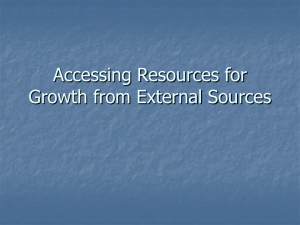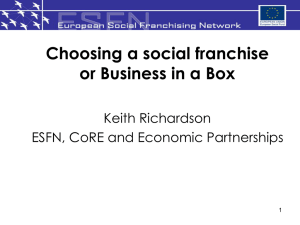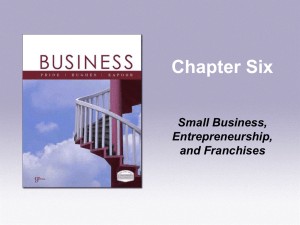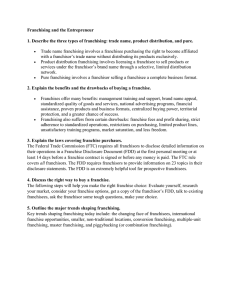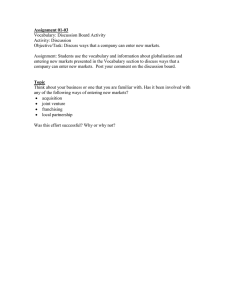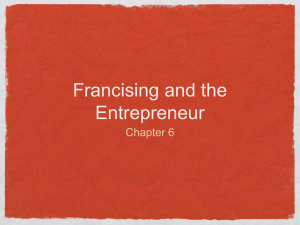SMALL BUSINESS MANAGEMENT Chapter Six Franchising
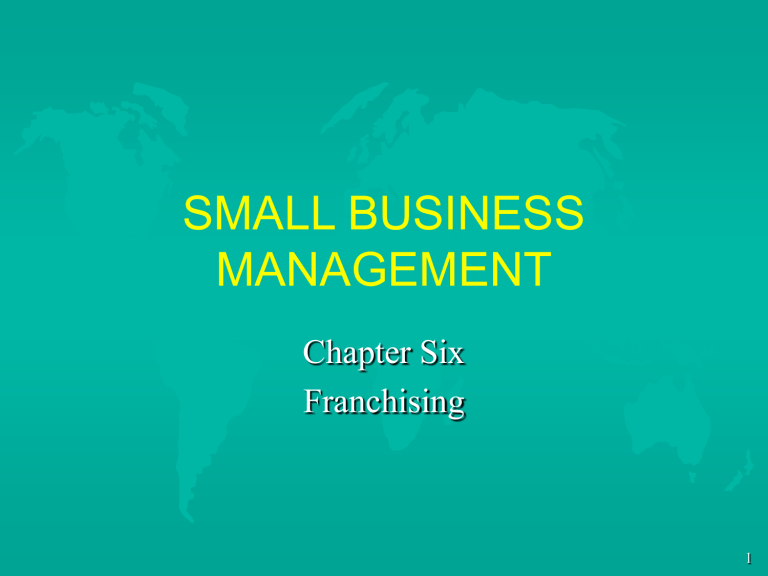
SMALL BUSINESS
MANAGEMENT
Chapter Six
Franchising
1
History and Background of
Franchising
2
What is Franchising?
Manufacturer Directed Franchise
Wholesaler-Retailer-Directed Franchise
Franchising Company
3
Advantages of Franchising
Proven Market fort he Product or Service
Services the Franchisor may provide.
– 1. Selection of Location
– 2. Purchase or Construction of Site, Buildings, and Equipment
– 3. Provision of Financing
4
Advantages of Franchising
Services ….
– 4. Standardized Methods of Operating
– 5. Advertising
– 6. Purchasing Advantages
– 7. Training
5
Potential Disadvantages of
Franchising
Lack of Independence
Cost of the Franchise
Unfulfilled Promises
Restrictions of the Contract
– Product or Service Offered
– Line Forcing
– Termination
6
Potential Disadvantages of
Franchising
Saturation of the Market
Lack of Security
Cost of Merchandise
Effectiveness of Promotion
Exaggeration of Financial Success
7
Evaluation of a Franchise
Opportunity
Franchisor
Industry Associations
Professionals
Other Franchisees
Government Agencies
8
The Entrepreneur as Franchisor
What Businesses can be Franchised?
9
The Entrepreneur as Franchisor
How does one become a Franchisor?
– 1. Establish a Prototype
– 2. Prepare the necessary Information.
– 3. Investigate the Legal Requirements
– 4. Develop a Planed and Standardized Program of Operations
– 5. Obtain Adequate Financing
10
Franchising in the Future
11
Appendices
A. A Sampling of Franchises Operating in
Canada
B. Trade Associations that Assist
Franchisees and Franchisors
C. A Checklist for the Potential Franchisee;
Questions to Answer before Going into
Franchising
D. Franchise Contract Clauses
12
Concept Checks
1. Why is franchising enjoying such rapid growth in the Canadian economy?
2. What are the three general categories of franchises?
3. What are the potential advantages of franchising?
13
Concept Checks
4. What are the potential disadvantages of franchising?
5. When investigating purchasing a franchise what sources of information are available to assist in making the decision?
6. What steps are involved in becoming a successful franchisor?
14
